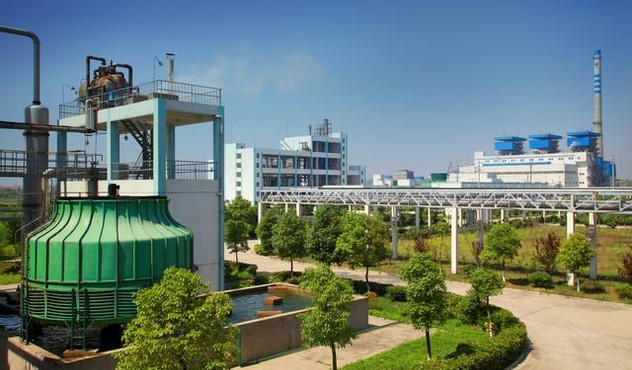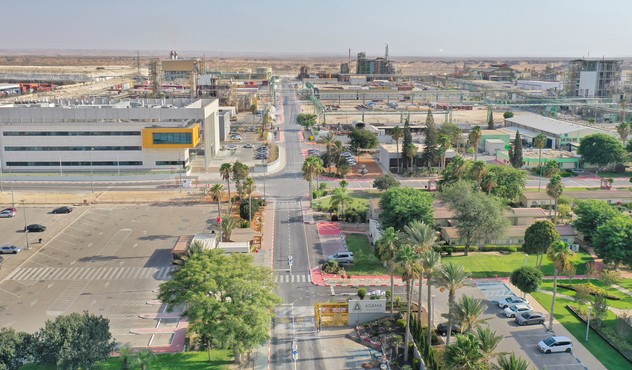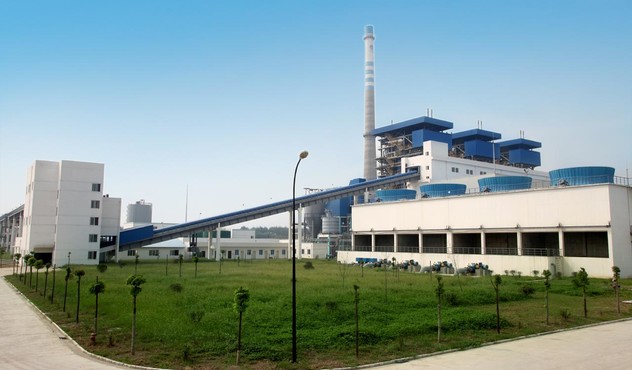
Environment
We are committed to reducing our GHG emissions and improving the air quality surrounding our sites. Explicitly, we are committed to reducing our absolute and/or per tonne production energy generated by fossil fuels by 10% by 2024 (2019 baseline), through developing and promoting solutions that support efficient and responsible energy use.
Despite production enhancement in 2021, we have succeeded in maintaining energy consumption at a similar level, and we were able to bring an approximately 30% decrease in GHG emission per tonne production from average values 2011-2020.
Carbon Footprint Measurement
ADAMA collects energy data from production sites and calculates its carbon footprint digitally. During 2021, ADAMA revised its scope 1 carbon footprint emission factors from CO2 only to CO2e, which accounts for more greenhouse gases (e.g., CO2, N2O, CH4, HFCs, PFCs). The new emission factors follow the UK Department for Environment, Food & Rural Affairs reporting guidelines.
Similarly, scope 2 carbon footprint emission factors, electricity and steam, were adjusted for each supplier, according to supplier specific data or the energy mix of the region/state electricity supplier.

| 2014 | 2015 | 2016 | 2017 | 2018 | 2019 | 2020 | 2021 | |
|---|---|---|---|---|---|---|---|---|
|
CO2 (tonne) |
383,051 | 386,773 | 251,956 | 237,942 | 242,249 | 214,163 | 214,437 | 276,061* |
* CO2e emission factors were embedded during 2021
| 2014 | 2015 | 2016 | 2017 | 2018 | 2019 | 2020 | 2021 | |
|---|---|---|---|---|---|---|---|---|
| Energy consumption, (TJ) | 3,272 | 3,312 | 3,243 | 3,227 | 3,334 | 3,493 | 3,250 | 3,758 |
ADAMA Solutions data. The performance of our two Chinese sites is reported separately.
Reducing Energy Use
Energy Cogeneration
Cogeneration is an environmental improvement, as it allows us to use the same energy twice. Natural gas drives the first turbine and residual heat generates steam to drive the second turbine, which is reused by our facilities for heating processes.
Two cogeneration power plants running on natural gas supply electricity and steam to our Makhteshim and Agan facilities, which account for 82% of our total electricity consumption and 93% of total steam consumption. This has allowed us to reduce our fossil fuel use and indirectly reduce greenhouse gas emissions by 30% since 2015.
| 2019 | 2020 | 2021 | |
|---|---|---|---|
| Electricity | 40 | 40 | 37 |
| Steam | 30 | 28 | 26 |
| Internal production (Fossil Fuels) | 30 | 32 | 37 |
* ADAMA Solutions data. The performance of our three Chinese sites is reported separately.

Green Energy
The transition to cleaner energy consumption is part of our long-term goal to reduce our impact on the environment and our GHG emissions. Our production sites in Spain, Colombia, and Brazil utilize renewable resource-based electricity.
- At our Spain site, we switched to 100% renewable resources, based on solar panels and wind turbines.
- In Brazil and Colombia, we purchased electricity that was mainly generated by a hydroelectric power station, combined with biomass combustion resources.
- Solar panels were installed on the roofs at ADAMA production sites, with a large 300KWH installation at the Agan logistics center.
- During 2021, the Dahej site (India) installed 25KWH solar panels on its warehouse roof.
- The Bonide site (USA) has been running solar panels on its roof for several years.
Saving energy will be achieved also by reducing the demand for electricity by replacing poor efficiency electrical units (e.g. motor, compressors, and lighting) with high efficiency ones. ADAMA has a designated budget to support such environmental initiatives.
Yet renewable energy adoption and energy conservation plans are not sufficient to meet the estimated 15% GHGs emission reduction required to offset the global warming effect, by targeting a 1.5°C global temperature increase by 2030, as calculated by the CDP (Carbon Disclosure Project) and SBTi (Science Based Targets initiative) organizations. Therefore, we expect to accelerate the utilization of carbon-free fuels as hydrogen, and carbon neutral fuels as biomass (wood).
Looking Ahead
Air Quality
We invest extensive resources in mitigating air emissions at our production plants, to meet and exceed air quality standards. We acknowledge the importance of disclosing particulate matter (PM) emissions, and started collecting this information in 2020. During 2021, additional production sites monitor PM and implement the best available technologies to control the risk.
The elevated NOX emissions can be attributed to the increased use of fossil fuel. No change was detected in SOX due to use of low sulfur fuel.
| 2017 | 2018 | 2019 | 2020 | 2021 | |
|---|---|---|---|---|---|
| NOX (tonne | 90 | 106 | 129 | 93.7 | 114.3 |
| SOX (tonne) | 22 | 32 | 48 | 21 | 20 |
| PM (tonne) | - | - | - | 14 | 21 |
ADAMA Solutions data. The performance of our two Chinese sites is reported separately.

